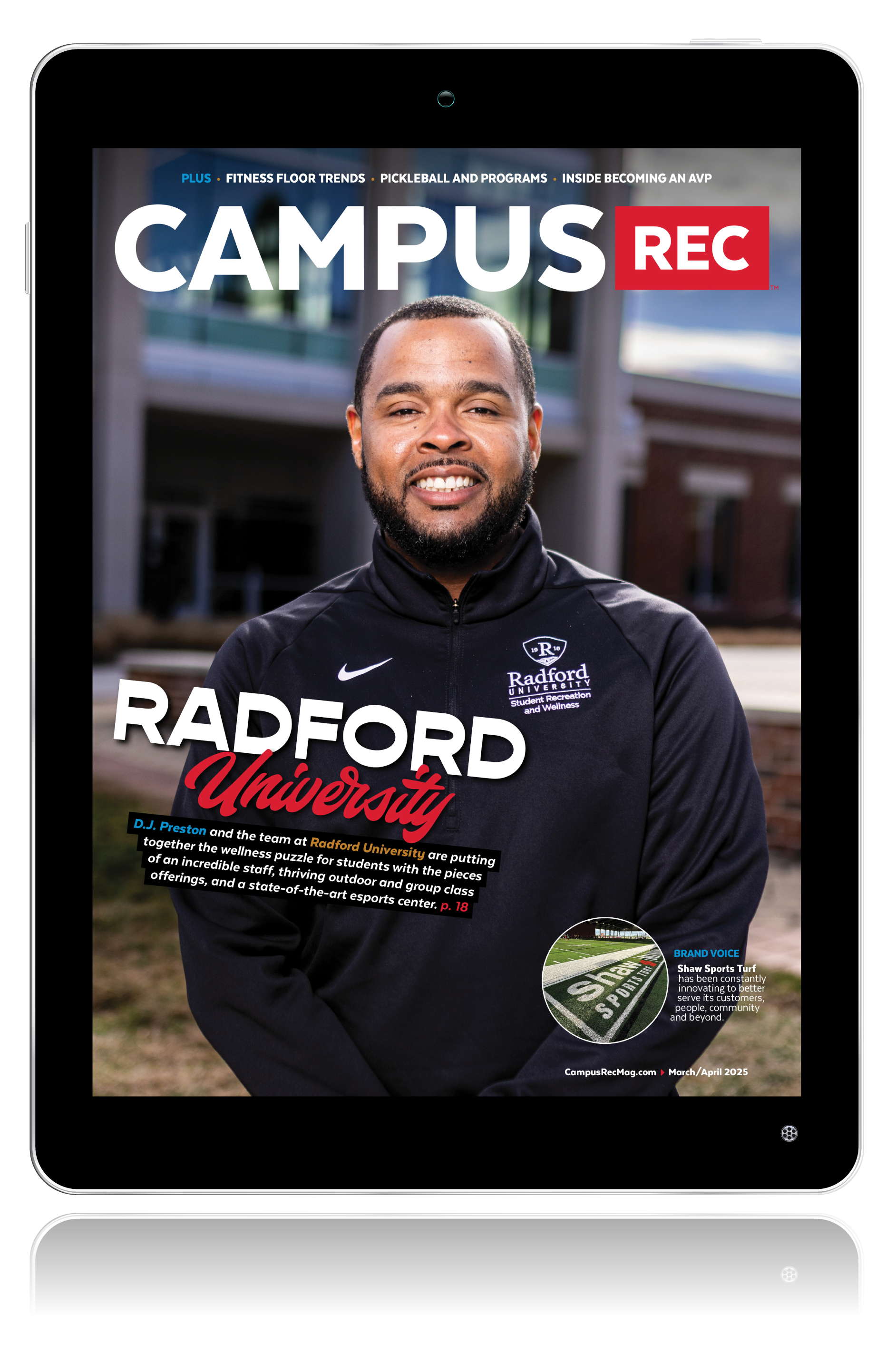I’m here to dissuade a myth that the main limits to participation in Campus Recreation for students are the big three: time, money and convenience. These are very important factors we need to negotiate with participants, but it has been the sole focus for too long. I am on a professional and personal crusade to shift that focus to BELONGING, and here’s why.
What is Belonging and Why does it Matter?
If diversity is the reality, equity is the practice and inclusion is the goal, belonging is the feeling students have when these are realized. The power of belonging is owned by the student, and it is our role as Campus Rec professionals to help foster that power.
If you feel you belong to a community, and that community makes you feel valued and accepted, you’re more likely to be healthy and engaged. We know through research our connections to others and the strength of those relationships make us less likely to suffer from poor physical, mental and emotional health. With COVID-19 and social activism currently at the forefront in our society, strong social networks encourage engagement to community and willingness to take action.
Campus Recreation has done a decent job of fostering a sense of belonging for students, but mainly for those students already comfortable with traditional sport and recreation culture that has focused on competition, physical movement and progressive development rather than social connections and fun. In fact, we measure our success through head counts, registration numbers and revenue, which really has nothing to do with student well-being — they are connected but do not tell the whole story. So how do we engage those students who currently don’t feel like they belong in our programs, facilities and opportunities?
Belonging in Campus Recreation is a participant-centric approach focused on three pillars where students feel invited, welcome and included. In future articles of this series, we will explore each pillar individually, but for now, here is a quick overview of each:
Invited
What are the cultures, behaviors and understanding participants experience or observe before participating? How are participants being invited into your programs, spaces and opportunities that motivates, inspires and leads them to show up as their authentic selves? How are you using language and imagery, creating facility spaces, storytelling, building staffing compliments, creating varied program options, and creating invitations based on feelings rather than informing people of opportunities?
Welcome
What are the cultures, behaviors and understanding participants experience or observe when they arrive or begin participating. Once people arrive in your programs, spaces and opportunities, how are they made to feel welcome by staff, instructors, lifeguards, referees and fellow participants? Are your programs, policies, facilities and structures created with a welcoming environment for all in mind?
Included
Everyone should be able to use the same facilities, take part in the same activities, and enjoy the same experiences in a way that meets their physical, mental and social needs. How are students being included in your programs, spaces and opportunities that motivate and inspire them to be lifelong participants and/or co-creators of their experience? How are you removing barriers and negotiating constraints to ensure students of all shapes, sizes, motivations and identities feel included?
Negotiating time, money and convenience really only helps those students who already feel like they belong in Campus Recreation but does nothing for those students who do not feel invited, welcome or included. This series of articles will help Campus Recreation professionals prioritize fostering a sense of belonging among students so all students can feel the benefits of sport and recreation. Next on “The Power of Belonging in Campus Recreation” will be “Invitation, More than Marketing.”











